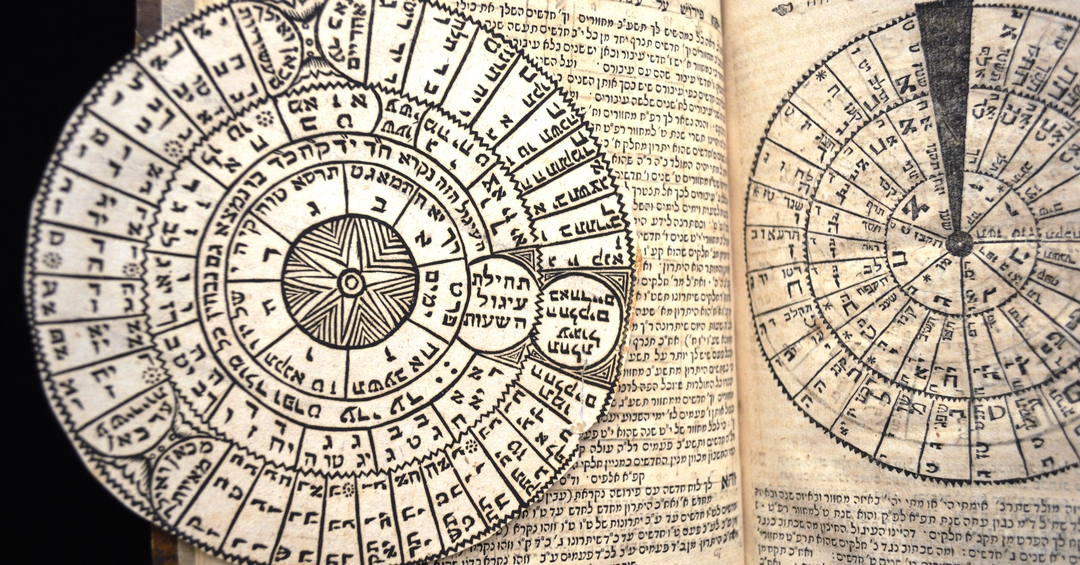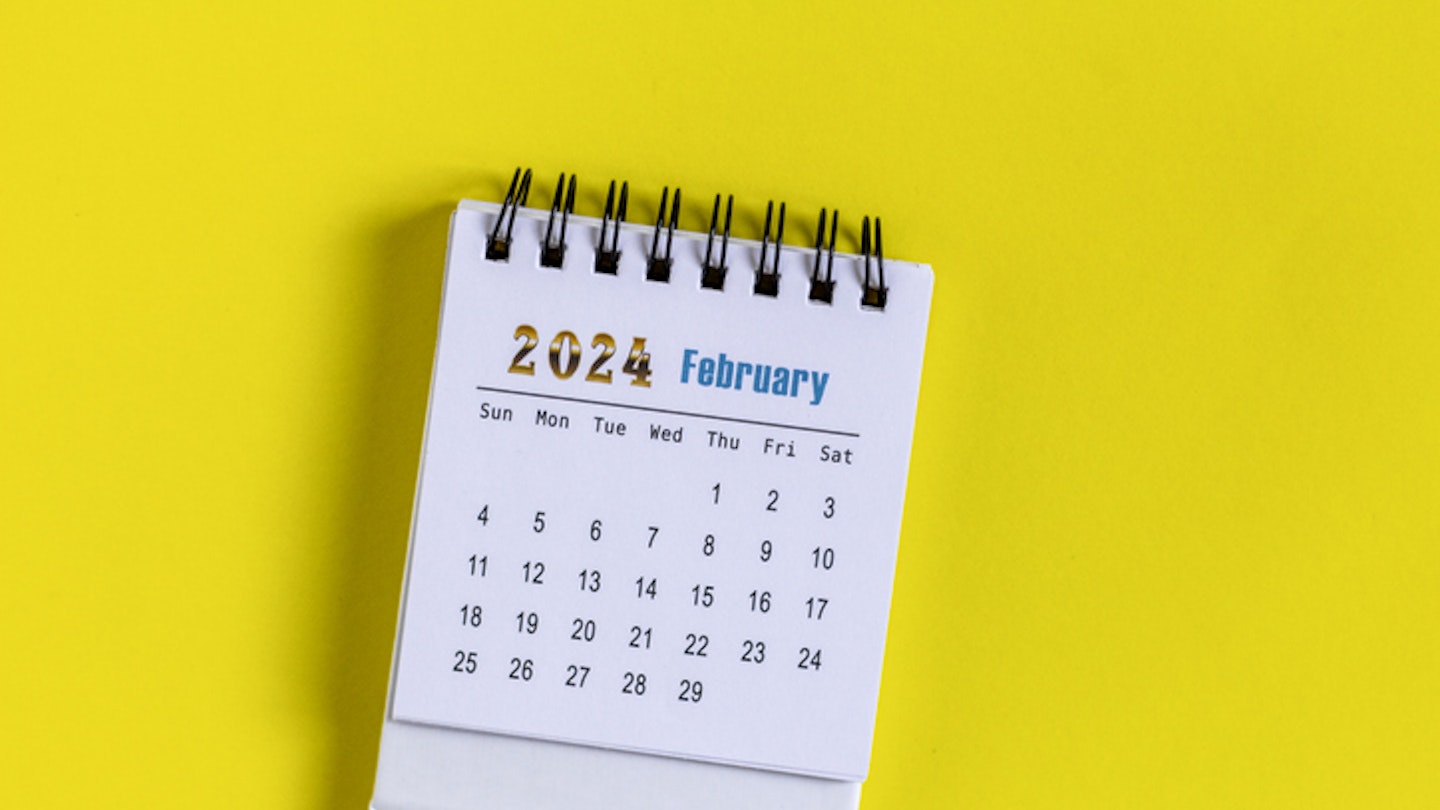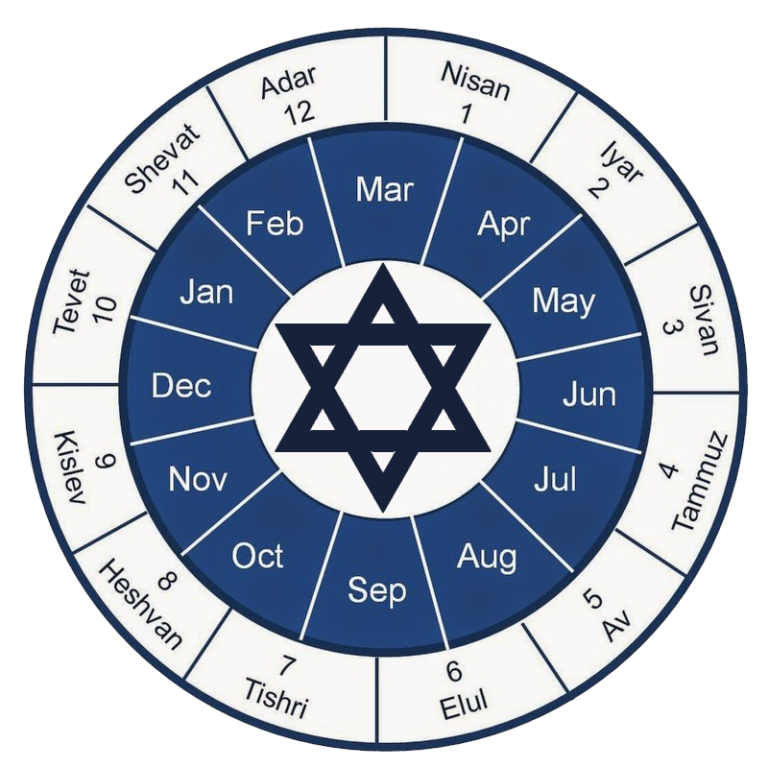Leap Year In Jewish Calendar
Leap Year In Jewish Calendar - Jewish religious year, the cycle of sabbaths and holidays that are commonly observed by the jewish religious community—and officially in israel by the jewish. What does a leap year look like on the jewish calendar? Web to make up for this difference, leap years consisting of 13 months are added in the jewish calendar. The jewish calendar works in cycles both of. The torah specifies that passover must be celebrated in the spring , and sukkot during autumn. In the jewish calendar, however, leap years have. Sun, moon, and holy scripture. From akkadian adaru) is the sixth month of the civil year and the twelfth month of the religious year on the hebrew calendar, roughly corresponding to the month of march in the gregorian calendar. Web in the gregorian calendar, every four years an extra day is added, creating a leap year—a year with 366 days instead of 365. To prevent certain jewish holidays like rosh hashanafrom falling on specific days of the week, a day may be added to the 8th month (marcheshvan) or subtracted from the 9th month (kislev).
To prevent certain jewish holidays like rosh hashanafrom falling on specific days of the week, a day may be added to the 8th month (marcheshvan) or subtracted from the 9th month (kislev). In this case, the two months are. Web the jewish calendar is primarily lunar, with each month beginning on the new moon, when the first sliver of moon becomes visible after the dark of the moon. Based on the classic rabbinic interpretation of genesis 1:5 (there was evening and there was morning, one day), a day in the rabbinic hebrew calendar runs from sunset (the start of the evening) to the next sunset. Sun, moon, and holy scripture. It is a month of 29 days. The jewish calendar works in cycles both of. Web in the gregorian calendar, every four years an extra day is added, creating a leap year—a year with 366 days instead of 365. Similarly, yom kippur, passover, and shabbat are described in the bible as lasting from evening to evening. The jewish calendar is lunisolar, just like the ancient macedonian, babylonian, egyptian, and chinese calendars.
The jewish calendar works in cycles both of. Web this year is a leap year, and february 29th is shabbat. Similarly, yom kippur, passover, and shabbat are described in the bible as lasting from evening to evening. The days are therefore figured locally. Web such a year is called a shanah meuberet (pregnant year) in hebrew; What does a leap year look like on the jewish calendar? Web to make up for this difference, leap years consisting of 13 months are added in the jewish calendar. Sun, moon, and holy scripture. The jewish calendar is lunisolar, just like the ancient macedonian, babylonian, egyptian, and chinese calendars. Based on the classic rabbinic interpretation of genesis 1:5 (there was evening and there was morning, one day), a day in the rabbinic hebrew calendar runs from sunset (the start of the evening) to the next sunset.
Hanukkah overlaps with Christmas this year. But why all the moving around?
Based on the classic rabbinic interpretation of genesis 1:5 (there was evening and there was morning, one day), a day in the rabbinic hebrew calendar runs from sunset (the start of the evening) to the next sunset. This means that a year in the jewish calendar can have 6 different lengths: In the jewish calendar, however, leap years have. In.
Why Do We Have Leap Years? Answers in Genesis
In english we call it a leap year, and it makes up all the lunar calendar's lost days. Web in the jewish calendar, however, leap years have an additional month. It happens 7 times in a 19 year cycle, spurred by the need to align the jewish lunar calendar with the solar seasons. In the jewish calendar, however, leap years.
The Jewish Liturgical Year Calendars in LBI Collections Leo Baeck
Web no, but there is a leap month! From akkadian adaru) is the sixth month of the civil year and the twelfth month of the religious year on the hebrew calendar, roughly corresponding to the month of march in the gregorian calendar. In english we call it a leap year, and it makes up all the lunar calendar's lost days..
2024 Is A Leap Year What Are They And Why Do We Have Them?
Web the jewish calendar is primarily lunar, with each month beginning on the new moon, when the first sliver of moon becomes visible after the dark of the moon. The torah specifies that passover must be celebrated in the spring , and sukkot during autumn. From akkadian adaru) is the sixth month of the civil year and the twelfth month.
Leap Day Birthdays What to Know About Feb. 29 The New York Times
To prevent certain jewish holidays like rosh hashanafrom falling on specific days of the week, a day may be added to the 8th month (marcheshvan) or subtracted from the 9th month (kislev). This means that a year in the jewish calendar can have 6 different lengths: Common years can be 353, 354, or 355 days. Web to make up for.
Exploring Judaism Irish Jewish Museum
Common years can be 353, 354, or 355 days. Similarly, yom kippur, passover, and shabbat are described in the bible as lasting from evening to evening. Web to make up for this difference, leap years consisting of 13 months are added in the jewish calendar. The jewish calendar works in cycles both of. To prevent certain jewish holidays like rosh.
Year 5770 of the Hebrew calendar ushers in Jewish New Year Deseret News
The jewish calendar is lunisolar, just like the ancient macedonian, babylonian, egyptian, and chinese calendars. The days are therefore figured locally. Web in the hebrew calendar, a leap year necessitates the addition of a whole month, termed an intercalary month—another adar; The torah specifies that passover must be celebrated in the spring , and sukkot during autumn. In the jewish.
Is 2024 a leap year? What to know about the bonus day in February
Web the jewish calendar is primarily lunar, with each month beginning on the new moon, when the first sliver of moon becomes visible after the dark of the moon. Web in the hebrew calendar, a leap year necessitates the addition of a whole month, termed an intercalary month—another adar; The torah specifies that passover must be celebrated in the spring.
All about the Jewish Calendar
It happens 7 times in a 19 year cycle, spurred by the need to align the jewish lunar calendar with the solar seasons. From akkadian adaru) is the sixth month of the civil year and the twelfth month of the religious year on the hebrew calendar, roughly corresponding to the month of march in the gregorian calendar. Web this year.
Ever wondered how the Jewish months line up with the calendar we follow
It happens 7 times in a 19 year cycle, spurred by the need to align the jewish lunar calendar with the solar seasons. In the jewish calendar, however, leap years have. From akkadian adaru) is the sixth month of the civil year and the twelfth month of the religious year on the hebrew calendar, roughly corresponding to the month of.
Web This Year Is A Leap Year, And February 29Th Is Shabbat.
The days are therefore figured locally. It happens 7 times in a 19 year cycle, spurred by the need to align the jewish lunar calendar with the solar seasons. In the jewish calendar, however, leap years have. Web in the hebrew calendar, a leap year necessitates the addition of a whole month, termed an intercalary month—another adar;
Similarly, Yom Kippur, Passover, And Shabbat Are Described In The Bible As Lasting From Evening To Evening.
This means that a year in the jewish calendar can have 6 different lengths: To prevent certain jewish holidays like rosh hashanafrom falling on specific days of the week, a day may be added to the 8th month (marcheshvan) or subtracted from the 9th month (kislev). What does a leap year look like on the jewish calendar? Based on the classic rabbinic interpretation of genesis 1:5 (there was evening and there was morning, one day), a day in the rabbinic hebrew calendar runs from sunset (the start of the evening) to the next sunset.
From Akkadian Adaru) Is The Sixth Month Of The Civil Year And The Twelfth Month Of The Religious Year On The Hebrew Calendar, Roughly Corresponding To The Month Of March In The Gregorian Calendar.
Web to make up for this difference, leap years consisting of 13 months are added in the jewish calendar. The jewish calendar is lunisolar, just like the ancient macedonian, babylonian, egyptian, and chinese calendars. Numerical values are represented using letters. Owing to these different means of calculation, discrepancies between jewish.
It Is A Month Of 29 Days.
Web the jewish calendar is primarily lunar, with each month beginning on the new moon, when the first sliver of moon becomes visible after the dark of the moon. Web in the jewish calendar, however, leap years have an additional month. Web in the gregorian calendar, every four years an extra day is added, creating a leap year—a year with 366 days instead of 365. Jewish religious year, the cycle of sabbaths and holidays that are commonly observed by the jewish religious community—and officially in israel by the jewish.






%2Fcdn.vox-cdn.com%2Fuploads%2Fchorus_asset%2Ffile%2F17176569%2F700410883.jpg)


